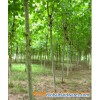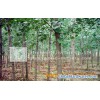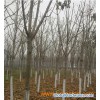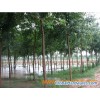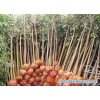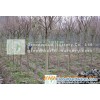Foshan Greenworld Nursery Co., Ltd supply all size of hibiscus syriacus from trunk diameter 3cm to 6cm with straight trunk, trunk height is about 2 to 2.2m, competitive price. Besides hibiscus syriacus, we also have many other cold hardy plants, please visit our website or contact us for detail. H. Syriacus is a flowering shrub in the plant family Malvaceae native to much of Asia, though not, as Linnaeus thought, to Syria, in spite of the name he gave it. It is upright and vase-shaped, reaching 2 to 4 m in height. It is widely planted in areas with hot summers for its very attractive white, pink, red, lavender, or purple large and edible flowers. Individual flowers are short-lived, lasting only a day. However, numerous flower buds are produced on the shrub's new growth, which provides prolific flowering over a long summer blooming period (July to September). Shoots make interesting indoor vase cuttings, as they stay green for a long time. In the vase some new flowers may open from the more mature flower buds. The species has naturalized very well in many suburban areas, and might even be termed slightly invasive, so frequently does it seed around. Hibiscus syriacus, a hardy hibiscus shrub, has been a garden shrub in Korea since time immemorial; It leaves were brewed for a tisane and its flowers are eaten. It was grown in Europe from the 16th century, though as late as 1629 John Parkinson thought it was tender and took great precautions with it, thinking it "would not suffer to be uncovered in the Winter time, or yet abroad in the Garden, but kept in a large pot or tubbe in the house or in a warme cellar, if you would have them to thrive. By the end of the 17th century, some knew it to be hardy: Gibson, describing Lord Arlington's London house noted six large earthen pots coddling the "tree hollyhock", as he called it, "that grows well enough in the ground. By the 18th century the shrub was common in English gardens and in the American colonies, known as Althea frutex and "Syrian ketmia". Though it has no autumn color and can be stiff and ungainly if badly pruned, H. Syriacus remains a popular ornamental shrub today, with many cultivars. William Robinson mentioned several varieties in The English Flower Garden that are still available today. Triploid varieties were first produced at the National Arboretum, Washington DC, by Dr. D. Egolf, resulting in plants that bloom lavishly, as they are sterile and set no seed; Egolf varieties named for goddesses include the outstanding white 'Diana'. Also in the market are 'Lady Stanley', 'Ardens', 'Lucy', and 'Blushing Bride










